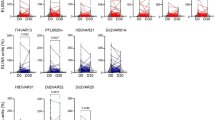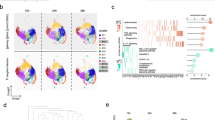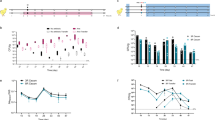Abstract
INJECTIONS of Indian ink, causing so-called ‘blockade’ of the reticulo-endothelial system, have, in the past, been classified with splenectomy and cortisone as agents calculated to lower the resistance of host animals to plasmodial infections. For example, Trager1, working with chickens infected with Plasmodium lophurae, found that indian ink usually caused the development of heavy parasitæmias in the birds receiving it.
This is a preview of subscription content, access via your institution
Access options
Subscribe to this journal
Receive 51 print issues and online access
$199.00 per year
only $3.90 per issue
Buy this article
- Purchase on SpringerLink
- Instant access to full article PDF
Prices may be subject to local taxes which are calculated during checkout
Similar content being viewed by others
References
Trager, W., Amer. J. Hyg., 34, 141 (1941).
Roberts, O. J., Parasit., 44, 58 (1954).
Singer, I., J. Inf. Dis., 94, 159 and 164 (1954).
Author information
Authors and Affiliations
Rights and permissions
About this article
Cite this article
LOXLEY, O. Effect of Indian Ink on Plasmodium berghei Infections in Mice. Nature 176, 705 (1955). https://doi.org/10.1038/176705a0
Issue date:
DOI: https://doi.org/10.1038/176705a0



